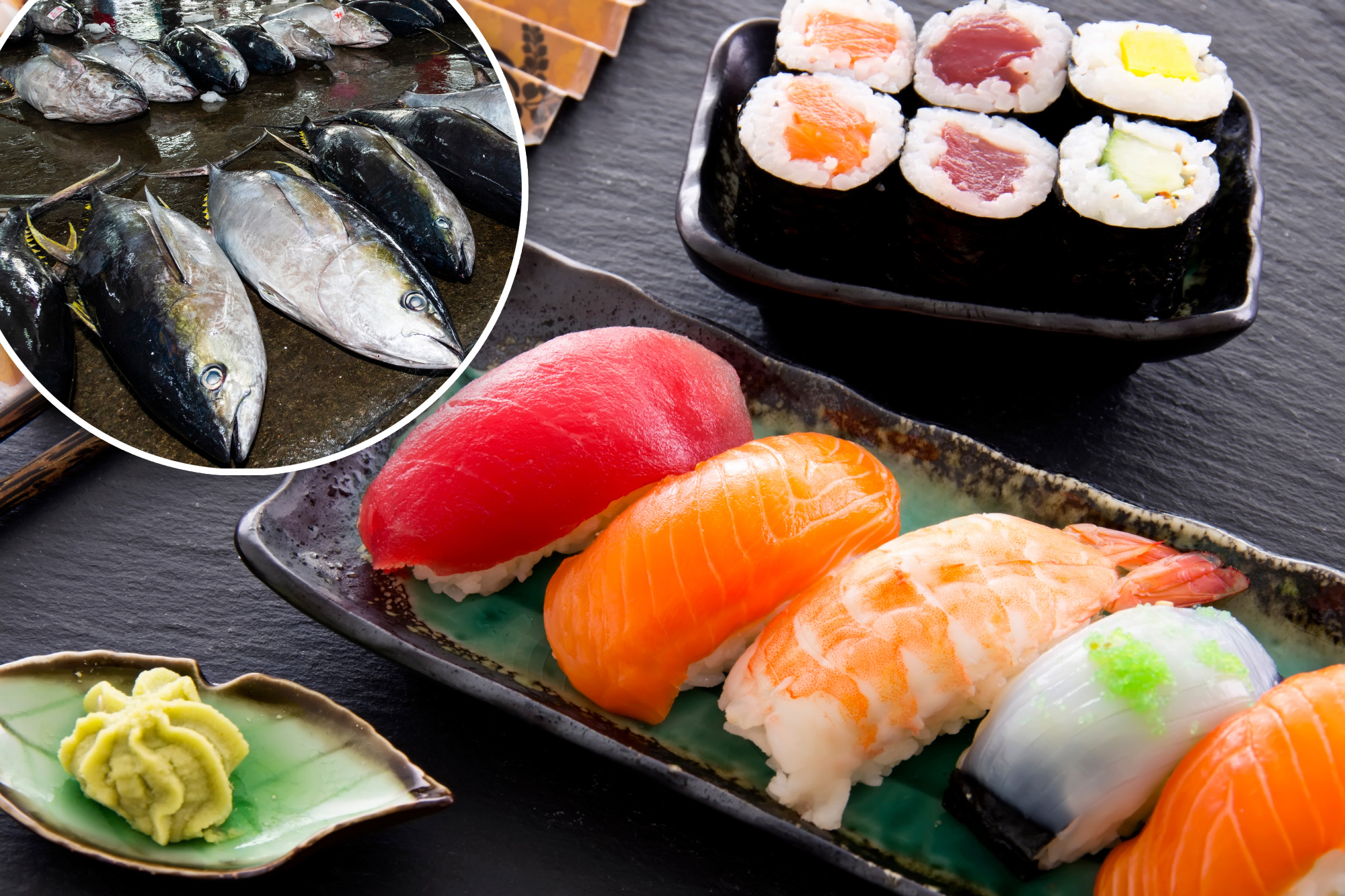
People are becoming forced – literally.
Experts warn when it comes to sushi, what you sea is often not what you get – by getting to the US as one of the world’s biggest fish thanks.
Studies have shown that the cheapest alternatives of fish are being misused and disguised as salmon, tuna, snapper and other raw sea foods with upper shelves-with cost cutting falsification almost impossible to see after SUSHI, cut and served.
In SH.BA, Snapper, Salmon, Prawns, Tuna – Popular Fish in Sushi and Sashimi – are the most common.
“Because the error rates depend on the species, if consumers want to avoid misuse, then they should avoid certain species and give priority to others,” said Dr. Marine Cusa, a biologist and maritime policy expert from Denmark Technical University for the Daily Mail.
Often, the fearful practice is not even malicious.
According to the benefits, it is normal to label and sell fish under the most generic names – to avoid buyers’ confusions.
For example, the “tone” toned fish can be one of 68 different species, the exit stated.
In general, the more coveted the species is as much sushi, the more likely it is to be forged.
According to a 2018 study, the most common fish exchanged in JBA and Canada is Snapper.
A common substitute is tilapia, which is free and widely available given that it is raised through aquaculture across the globe, the Independent reported.
Tuna also without high rates of deep-Fakery. Research from 2018 showed that out of 545 samples of tones in six European countries, 6.7% of them were from a species completely different from what was advertised on labels.
Fraud of Tuna Atlantic Bluefin – a precious sushi fish – can be up to 100 percent, depending on the place.
Prans Tiger, meanwhile, were the most misused seafood in the US, according to a Harvard 2020 study for the Daily Mail.
After close, the Atlantic salmon was cultivated, which is often sold under the guise of the cheapest rainbow trout, according to another 2020 study.
Unfortunately, this common gap can be used by bad actors who deliberately keep and pass customers with fraudulent labels – which is surprisingly easy to withdraw.
“The average person who looks at it, they can’t show. But you can sell four or five different fish that look like a red snapper and they are not a red snapper,” Maltese tone, which has over 55 years of experience in and is the director of seafood in the Fairway market chain in New York, “America Greed” in 2018.
These Trojan cuisine horses are not just misleading – they can be dangerous.
One of the known shocks for tone is Escolar, a free fish that can cause diarrhea because they contain an impenetrable wax that operates a natural laxative. She has been responsible for the incidents of mass food poisoning in the past.
Unfortunately, the deception of seafood is growing more widespread due to the complex and vague supply chain, making it difficult to see if this trick begins in the boat, wholesale or retail sellers, according to the Oceana Naval Conservation Group.
How do you notice a so -called fish tale?
Dr. Cusa advised, “In general, fish products that are sold in supermarket chains and that have detailed labels showing species, the location of the catch and the clip dresses are also good choices.”
“On the other hand, processed products, canned products with little information if any, almost by definition, misused,” she added. “I would avoid any product with poor labeling or where the species is not shown.”
#fake #sushi #sick #experts #heres #true #false
Image Source : nypost.com